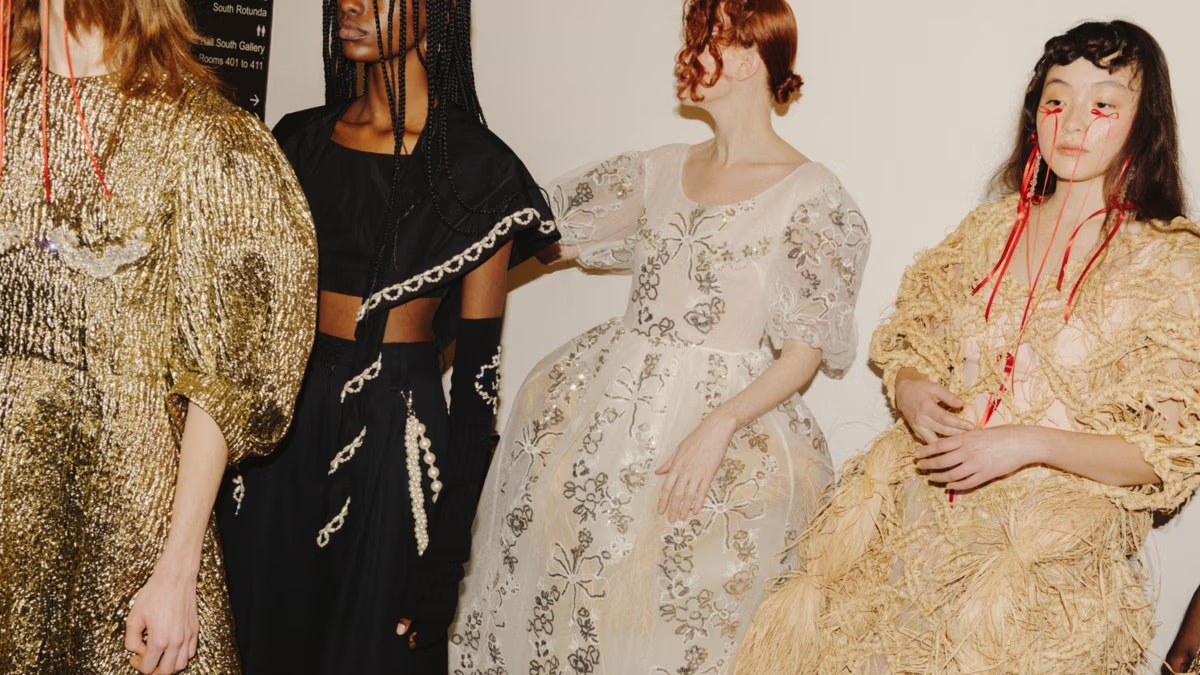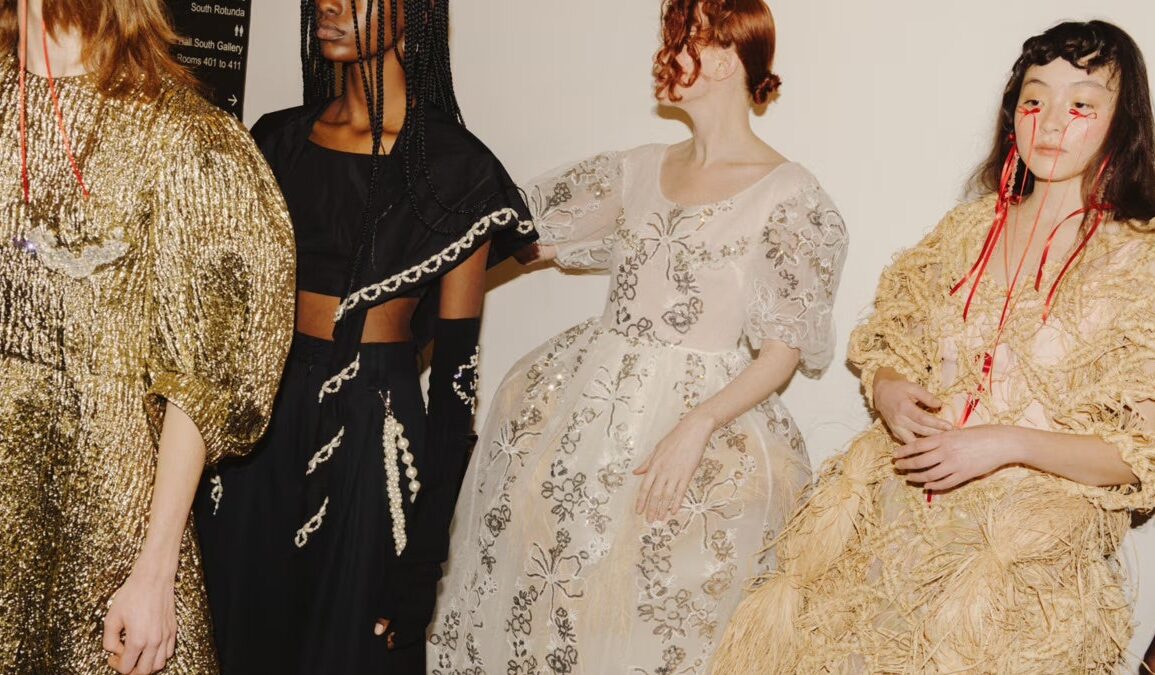
“I remember making it like it was yesterday,” says Simone Rocha of a spider dress that was an early homage to the artist Louise Bourgeois that featured in her BA collection. “I got so obsessed with it. It was all crocheted lurex doilies. I was painstakingly cutting 2 cm strips of latex into a yarn and working that in. It was a pattern-cutting nightmare,” she recalls, smiling in her London studio. Wearing a gingham dress of her own design, a hefty rope silver chain and a cream bow perched in her dark hair, Rocha is breaking from spring 2024 fittings to talk about her part in a new exhibition “Echo. Wrapped in Memory” at MoMu in Antwerp which puts her work alongside that of Bourgeois and the avant-garde choreographer Anne Teresa De Keersmaeker in what is set to be a fascinating exploration of fashion and memories.
Bourgeois’s own connections to clothing, textiles, and fashion are many. She grew up amid tapestry restoration in Paris; she put clothes, often her own, in her sculpture; she even became friends with Helmut Lang, appearing in his ad campaigns. “Fashion is like the weather, the ocean – it changes all the time,” she said. She also spoke of how garments hold memories of people and places and are “an exercise in memory” or “like signposts in the search for the past.” De Keersmaeker, meanwhile, has repeatedly collaborated with Dries Van Noten—he designed clothing for a reprisal of her piece “Rain” in 2017 at London’s Sadlers Wells, while De Keersmaeker herself appeared in the designer’s fall 2021 collection, inspired by the designer’s own love of dance.
“The three of them share a certain sensibility. What they create comes from a personal place,” says curator Elisa de Wyngaert. “Everything in the show is about different identities, being an artist, a mother, a daughter, a woman, a person in the world. The way these women see the beauty in garments that are not perfect and the way memories can be interwoven with our experiences.” In the exhibition, de Wyngaert has drawn together works by all three women alongside complementary pieces from the likes of Billie Zangewa, Harley Weir, and Maya Barrera. There will also be childhood drawings by designers, including a sketch by Martin Margiela of his grandmother who was a key influence in him becoming a designer. “He wrote to me and said that after he did his first fashion show she [his grandmother] came backstage and said, ‘oh Martin what a great success doing everything I told you not to do’,” laughs de Wyngaert.
Blue Days from 1996 by Bourgeois will be on show in Europe for the first time. Twenty looks from across Rocha’s career will also be displayed as tableaux alongside new films created by De Keersmaeker’s company Rosas that will illustrate the way her choreographies are linked to the costumes; it will also mark the first time the choreographer has spoken publicly about clothing in her work. “Clothing is crucial to De Keersmaeker. Like both Bourgeois and Rocha, she is very precise about all the garments she uses in her performances, ” says de Wyngaert. “The garments and the dance moves are very much informed by memories, from her childhood and the clothing her parents used to wear or she used to wear as a child.”
This post was originally published on this site be sure to check out more of their content.









